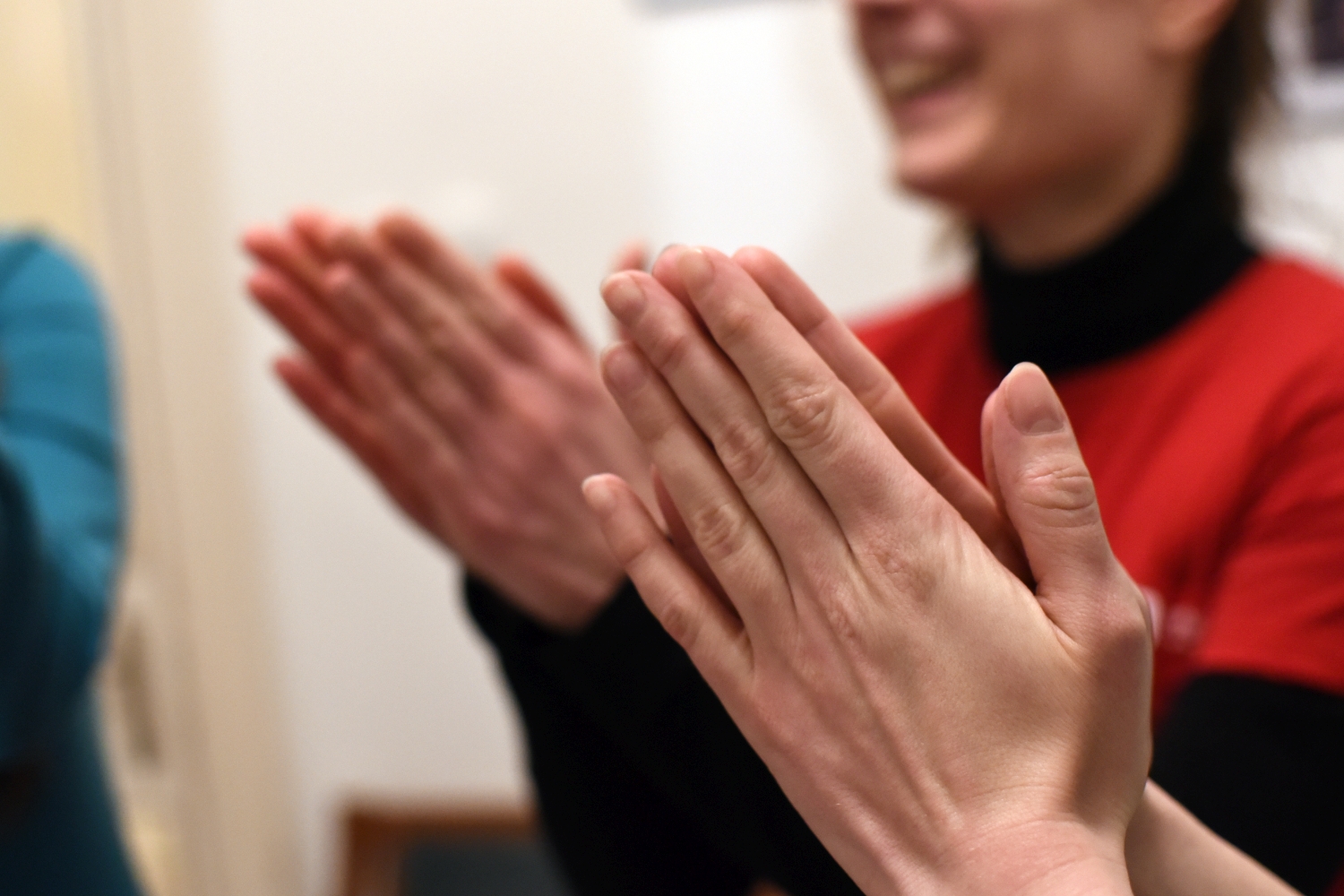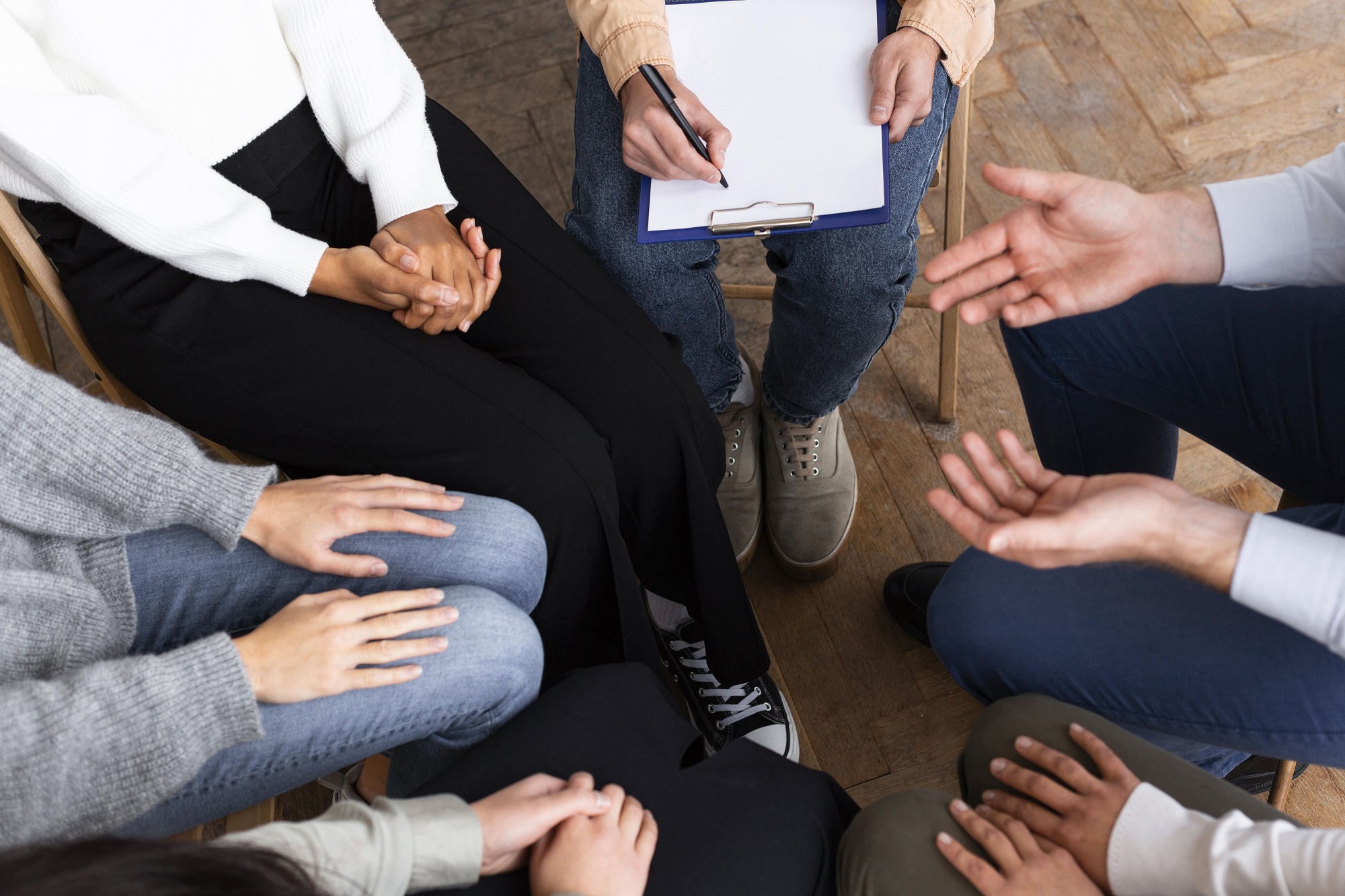by immusic | Nov 29, 2022
Category
vocal
rhythmic
Age
12-25
Number of participants
8-12
Duration
approx. 15 min.
Working method
group work
Musical abilities of the trainers
1 2 3 4 5 6
Equipment and instruments
- optional: percussion instrument
- music player / app to play the song
Competences
- creativity
- collaboration
- attention
- concentration
- movement coordination
- rhythm recognition
- sense of rhythm
Do as I’m Doing
Singing a simple melody with movements
and rhythmic accompaniment.
AIM
The main objectives are to introduce participants to the joy of singing songs together, as well to provide some knowledge of musical experience, understanding and enjoyment. Besides developing their skills with these musical activities, participants can have a great time experiencing a flow state.
Description
It’s a simple follow me game: the participants imitate the leader while singing. Adapting to the text, we follow the instructions in the last line in movement: fast, slow, high and low.
For example: participants stand in a circle and clap in the tempo according to the lyrics. They can repeat the song with marching motions, then go back to clapping to finish song.
After a while, the leader passes the baton (for example to the person next to her/him in the circle), the point is that as many people as possible become leaders in the game.
At the beginning of the game, even learning the sounds is important, it is worth starting with simple movements. But afterwards, the imagination can be unleashed, what kind of movements we can invent while keeping the rhythm.
Lyrics
Do as I’m doing, follow, follow me,
Do as I’m doing follow, follow me.
If I do it high or low, if I do it fast or slow.
Comments for facilitators
During the activities be care of the steady beat.
There are countless versions of these popular songs, and they have varied in lyrics and melody over the years, so you can learn any version.
Percussion instruments can be used during the musical games, e.g. drums, percussion eggs, wood maracas, rhythm sticks, bells or castanets.
by immusic | Nov 29, 2022
Category
rhythmic
Age
12+
Number of participants
8-12
Duration
approx. 30 min.
Working method
Musical abilities of the trainers
1 2 3 4 5 6
Equipment
and instruments
- optional: percussion instrument
Competences
- creativity
- attention
- collaboration
- concentration
- rhythm recognition
- sense of rhythm
- memory
The Poison Rhythm
A rhythmic game that focuses on concentration
and at the same time develops a sense of rhythm
without being noticed.
AIM
The main goal of the activity is to develop participants’ steady beat competency by involving different rhythmic patterns and various body movements.
Description
The activity starts with the instructor clapping a four-beat rhythm that is labelled the ‚poison rhythm’.
He/she will then clap a series of four beat rhythms to the participants, which they repeat.
When the instructor claps the poison rhythm, the participants should remain silent.
If anyone accidentally claps the poison rhythm, he/she is out of the game. This is a simple and enjoyable way to help participants recognize different rhythm patterns.
The role of leader can also be transferred here so that as many people as possible can use their creativity.
Examples of poison rhythm and four-beat rhythmic patterns:
comments for facilitators
Percussion instruments can be used during the rhythmic games, e.g. drums, percussion eggs, wood maracas, rhythm sticks, bells or castanets.
During the activities be care of the steady beat! The dynamics of the activities can be changeable.
by immusic | Nov 29, 2022
Category
rhythmic
Age
12+
Number of participants
5-12
Duration
approx. 10 min.
Working method
group work
Musical abilities of the trainers
12 3 4 5 6
Competences
- memory
- collaboration
- attention
- concentration
- rhythm recognition
Give me Rhythms!
Playful rhythmic exercise, which is a simple musical version
of the well-known word game
AIM
The goal of the game is for the participants to acquire, in a playful way, unnoticed, musical basics and competencies that can serve as the basis of their interest in the future. And it has an extremely strong team-building effect, encouraging cooperation and mutual attention.
Description
Participants sit in a circle and choose a leader who claps a rhythmic formula and passes it to the person sitting next to him/ her.
Everybody in the circle claps it individually. After the rhythm gets back to the leader, he/she will find out and start a new rhythmic formula and send it around.
This way the game becomes a two-part rhythm activity.
The leader can be different in every turn.
The two rhythm patterns can be played in different ways, for example with clapping and flicking.
comments for facilitators
Adapting to the abilities of the group and the opportunities provided by the venue, you can also play with simpler melodies, the main thing is that only the next person in line hears the melody.
by immusic | Nov 28, 2022
Category
rhythmic
Age
10+
Number of participants
5-30
Duration
approx. 10 min.
Working method
group work
Musical abilities of the trainers
12 3 4 5 6
EQUIPMENT
AND INSTRUMENTS
- optional: any type
of instrument
Competences
- creativity
- improvisation
- attention
- cooperation
- concentration
- rhythm recognition
- sense of rhythm
Check My Beat
A simple game that encourages concentration, keeping the pace, and is based on creativity.
AIM
The goal of the game is to create mutual attention, to promote teamwork and cooperation, while also developing a sense of rhythm and rhythm recognition. Figuring out rhythm formulas develops creativity, and imitation strengthens musical memory.
Description
1. Participants are standing in a circle.
2. The instructor says in a rhythmic way: Here is my rhythm now, check my beat! and claps the steady beat four times.
3. The participants answer together in a rhythmic way, too: We got your rhythm now, here is your beat! and they clap the same.
4. The next person clockwise will be the next one who finds out a new formula and the others will repeat it together and so on.
The formula always contains four quarters, but it can be performed in many ways, e.g. with clicking, with tapping a body part, with la-la. Alternatively, these activities can be mixed.
by immusic | Nov 28, 2022
category
rhythmic
Age
8+
Number of participants
5-30
Duration
approx. 10 min.
Working method
group work
Musical abilities of the trainers
1 2 3 4 5 6
Equipment and instruments
- optional: any type of instrument
Competences
- movement coordination
- attention
- cooperation
- concentration
- rhythm recognition
- sense of rhythm
Rhythm Machine
A rhythm game with which a more complex sound can be achieved.
AIM
This game for developing the sense of rhythm requires a more complex way of thinking by combining simple elements. It depends on the creativity of the participants to achieve a complex sound by layering the rhythms.
Description
This activity is similar to the game called Give me rhythms.
Participants are sitting in a circle. One person starts the Rhythm Machine by doing a simple rhythm that repeats over and over.
This pattern can be a basic 4/4 quarter note beat.
The person sitting to the left of the starter then adds his/her own rhythm to go along with the rhythms that are already going.
Again, the rhythm has to be repeated and cannot be changed.
After everyone has added a rhythm, the first person stops doing his/her rhythm. The others continue their rhythm, the next round the second person drops out, and so on. It continues until the last person has a rhythm.
Rhythm examples:
Comment for facilitators
Percussion instruments can be used during the games, e.g. drums, percussion eggs, wood maracas, rhythm sticks, bells or castanets.
During the activities be care of the steady beat!








Recent Comments